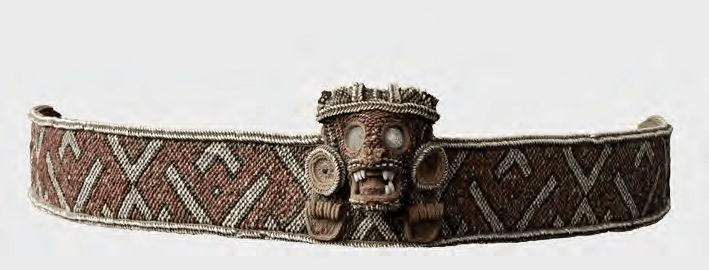Although this is far from ideal, one can get the gist of Miguel Cabello de Balboa's chronicle of the Incas in a 19th century French translation. Completed by Ternaux Compans in the 1840s, the partial translation covers the chapters pertinent to the Incas, omitting most of the large chronicle's chapters on various other topics. Obviously, we would prefer to read the entire work. But, reading 16th century Spanish chronicles is harder than 19th century French translations. Despite this less than ideal context for reading Cabello de Balboa, one is struck by some of the differences in how this chronicler approached the past of the Incas.
First, Miguel Cabello de Balboa drew from a lost work by Cristobal de Molina and his own sources. Some of these sources seem to reflect greater familiarity with the coastal regions of Peru and Ecuador rather than Cuzco. This means that Miscelánea Antártica may be useful for reconstructing the general narrative of Inca history written by Molina. It also adds a little more knowledge of the Chimu, Lambayeque and other coastal or plain areas, including stories and traditions of the rotation of rulers in the Lambayeque valley and what happened to descendants of the ruling class there. Alas, we do not have anything akin to a detailed chronicle of Chimu or the coastal dynasties, but it shows how the power emanating from the coast was growing at the same time as that of the Incas in Cuzco. Migration to and fro between the coast and the highlands has also been an ongoing factor that must have impacted the relationship between yungas and highlanders in many ways not explored in this chronicle.
Even in his account of the rise of the Inca rulers at Cuzco, Cabello de Balboa differs from others. The early Inca rulers, as one might surmise, left Pacaritambo but it took generations before their power was felt beyond the Cuzco valley. With the rise of Pachacuti, the empire truly took shape. Hailed as a reformer, conqueror, able administrator, and the man who dethroned his father, our chronicler seems to mix him up with his son, Topa Inca. The familiar story of the rise of the Incas under these two into a formidable empire is here, but one gets a sense of just how unstable things could be with the rapid growth of empire. For instance, a plot against Topa Inca by his brother, Topa Capac, threatened the former's reign. Succession crises were also common, as Topa Inca was said to have preferred his bastard son, Capac Guari, to succeed. However, Huayna Capac and his mother resisted this move and went so far as to accuse the mother of the bastard heir of poisoning Topa Inca! Even regents could be a threat to young rulers, as Huayna Capac's regent, Apoc-Gualpaya, sought to seize the throne from him, too! Even during his campaigns against the Caranguis, the orejones warriors revolted due to their poor treatment by Huayna Capac after their shameful retreat. It required the miraculous story of the mother of Huayna Capac's speech and intervention (plus generous gifts and supplies of food from Huayna Capac) to restore the loyalty of orejon troops. One might add that these were troops from Cuzco, too, not warriors gathered from the provinces. In light of the fratricidal conflict between Atahualpa and Huascar on the eve of the Spanish conquest, it was perhaps very common for conflict over succession or the throne to occur in a context where the Empire grew so rapidly over a short century.
The rest of Cabello Balboa's observations on the Incas are occasionally interesting. Thrusting a love story here or there, for example, might be an example of how his Inca informants combined engaging personal narratives with history. He also was very negative in his evaluation of Huascar. The latter is depicted as a brutal tyrant without any real military leadership ability. Atahualpa, on the other hand, gives a stirring speech in which he justifies his conflict over the throne as a defense of the rights of his supporters. Atahualpa's troops committed atrocities too, yet Cabello de Balboa's chronicle (or his sources) appear to have been pro-Atahualpa. Some of the other observations made in the chronicle are a reference to the use of khipu to "record" a will (the testament of Huayna Capac) and the maritime voyages of Topa Inca to two mysterious islands in the Pacific.

No comments:
Post a Comment